UPDATE JUN 2023:
We will never know their names.
We will never know how many nor exactly where they came from.
We can, however, try to tell their story so that they will never be forgotten.
On 3 June 2023, a group of Tamils from Malaysia calling themselves the Death Railway Interest Group (DRIG) re-dedicated a decades-old memorial to commemorate those buried there who, since the late 1940s, had gone unidentified.
It could have been so much more.
The Story:
In a vault beneath that structure are the remains of at least 10,000 Asian laborers (aka romusha) who were forced by the Japanese to build the Thai-Burma (Death) Railway. Altogether there may have been as many as 500,000 such laborers who worked three projects in 1942-45. It is estimated that at least 40% of them died in the process. They were left in the jungles of western Kanchanaburi.
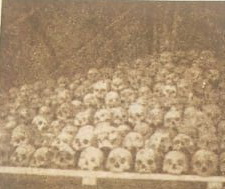
But those buried in this place had survived their ordeal in the jungle. They died in ‘rest camps’ where they were brought after construction of the Railway was complete in October 1943. Well after the war was over, these people languished here as they watched the Allied POWs being evacuated. They had been abandoned. Many were still here in 1947. Without adequate food or medical care, they continued to die of malaria, dysentery and malnutrition to name only a few of the maladies that plagued them.
During the late-40s and into the 50s, construction crews began to unearth graves. Most contained 3 to 7 sets of remains. The abbot of the temple took responsibility and collected those bones. Over the next decade, at least three different burial ceremonies were performed. In total, they amounted to over 10,000. By the mid-50s, no more graves were being found so the vault was sealed and this structure was erected in 1957. But even only 10 years after the war, the identity of these people had been forgotten.
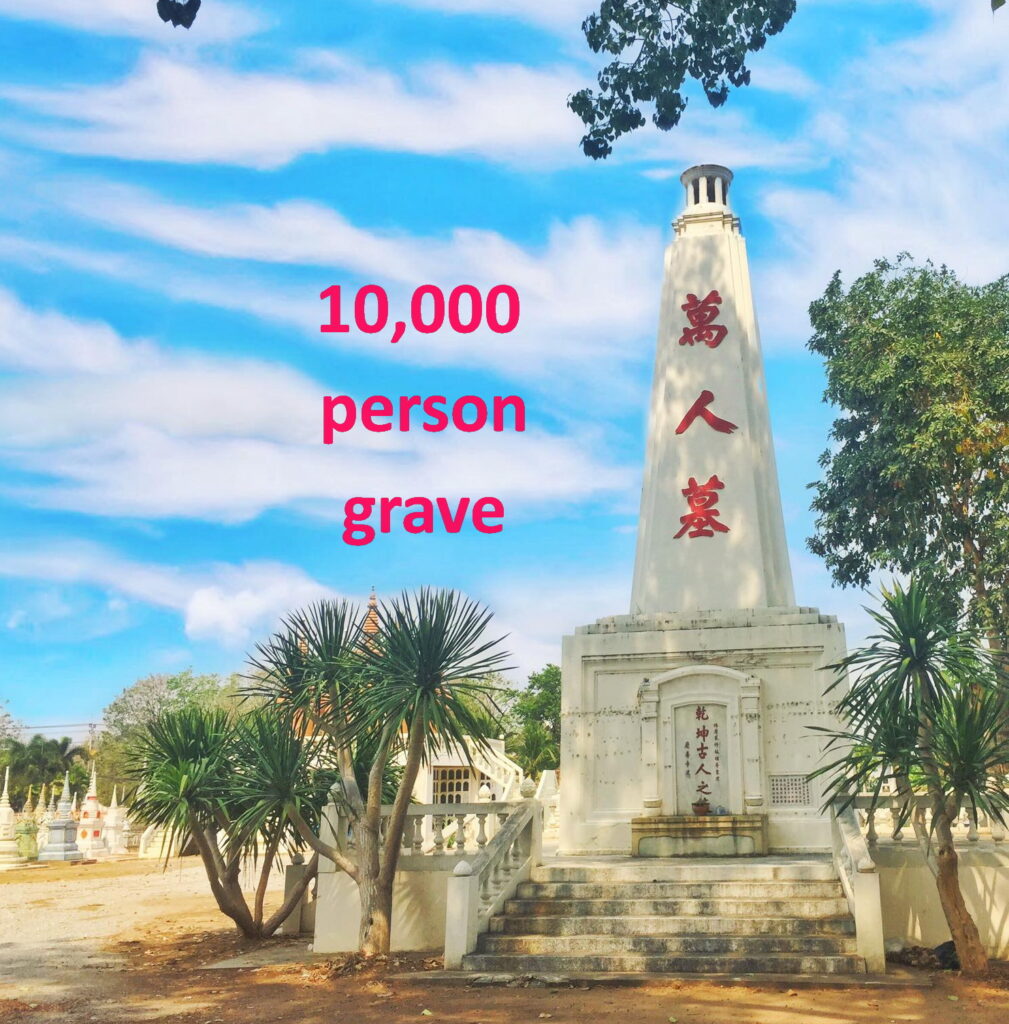
Who were they? The vast majority were Tamils from Malaya; some were ethnic Chinese from Malaya or Singapore.
Why did they die here? After the war’s end they were abandoned even though they were British subjects if not fully British citizens. They had survived the ordeal of the Railway camps only to die in the months and years after coming to these ‘rest camps’.
The memorial today:
Unfortunately, the organizers took every possible shortcut in a rush to dedicate this memorial. First they shoddily repaired and repainted the neglected structure. After only a pressure wash, a new layer of paint was applied over the many others that had been put there over the decades. My heart goes out to the victims who donated money to support this fiasco of a ceremony so 1 man could dance in the sunlight!
Then they wrote a rather confusing inscription to be carved in granite and mounted for all to see. In reality, it does nothing to clearly explain the true purpose of the structure or the larger story of who is buried there. At the time of the re-dedication, only the Tamil language plaque was mounted. Such was the rush to get something done. Within a few weeks, the English and Thai language plaques were mounted but they are just as confusing and useless as the first.
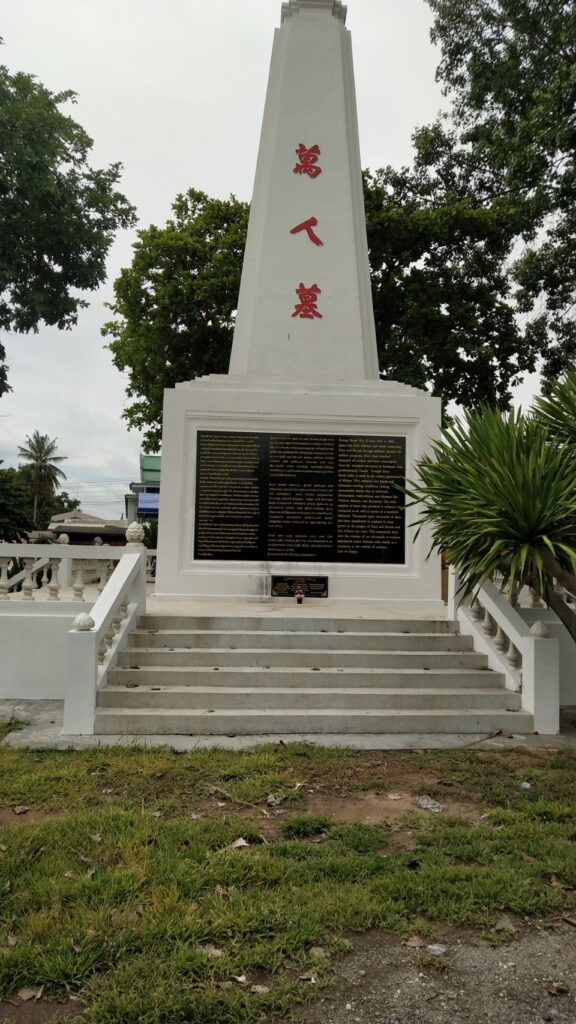
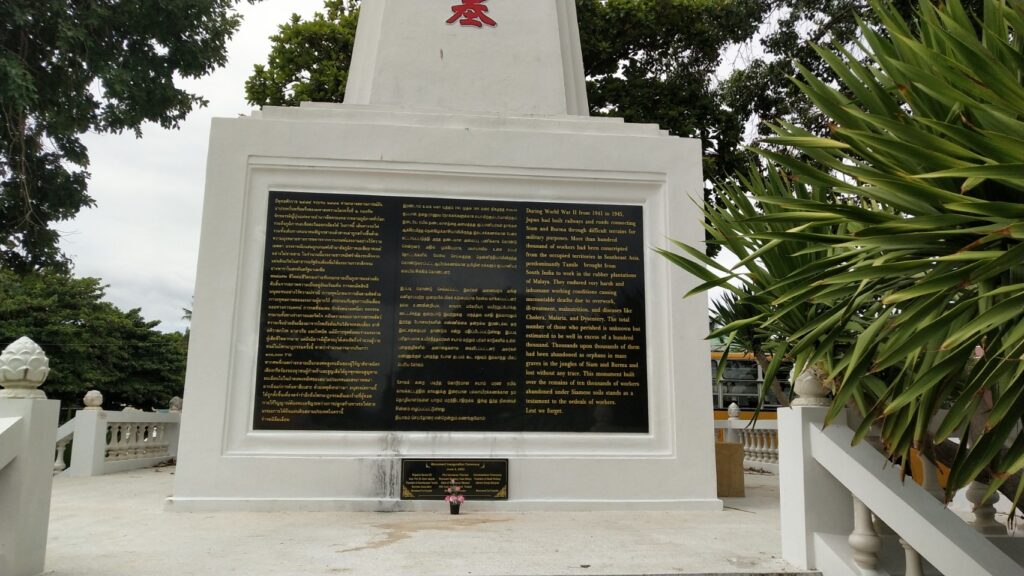
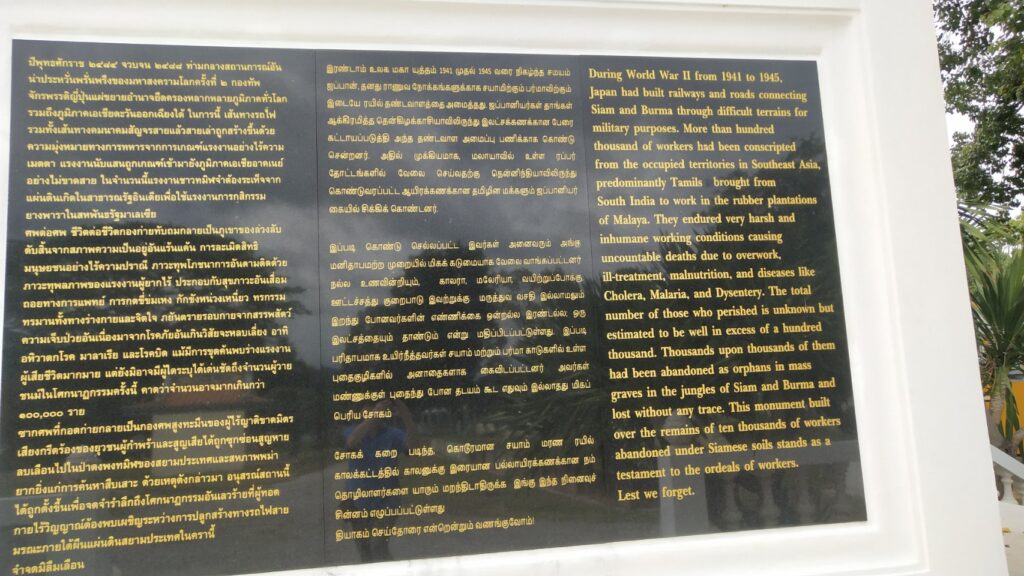

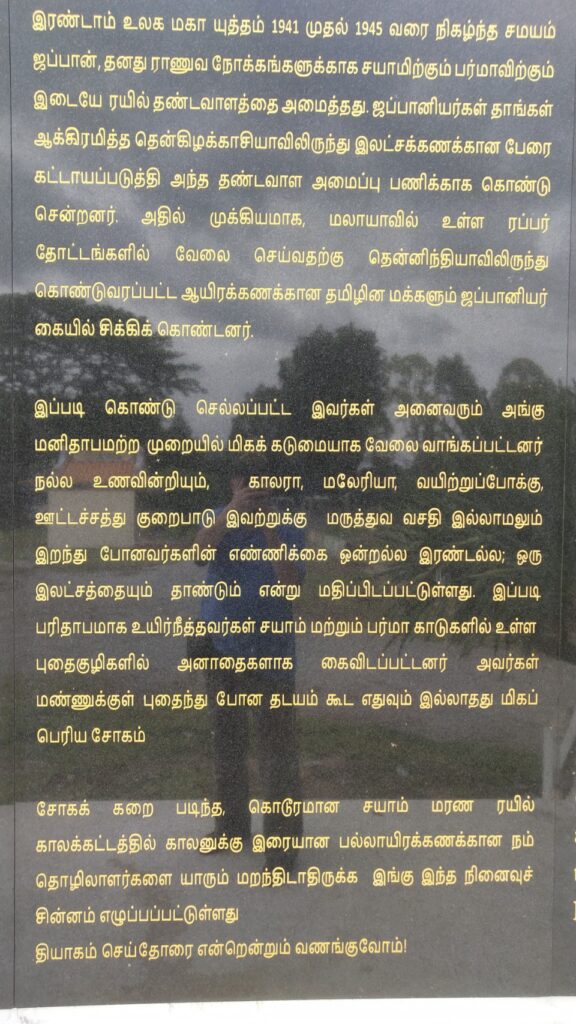
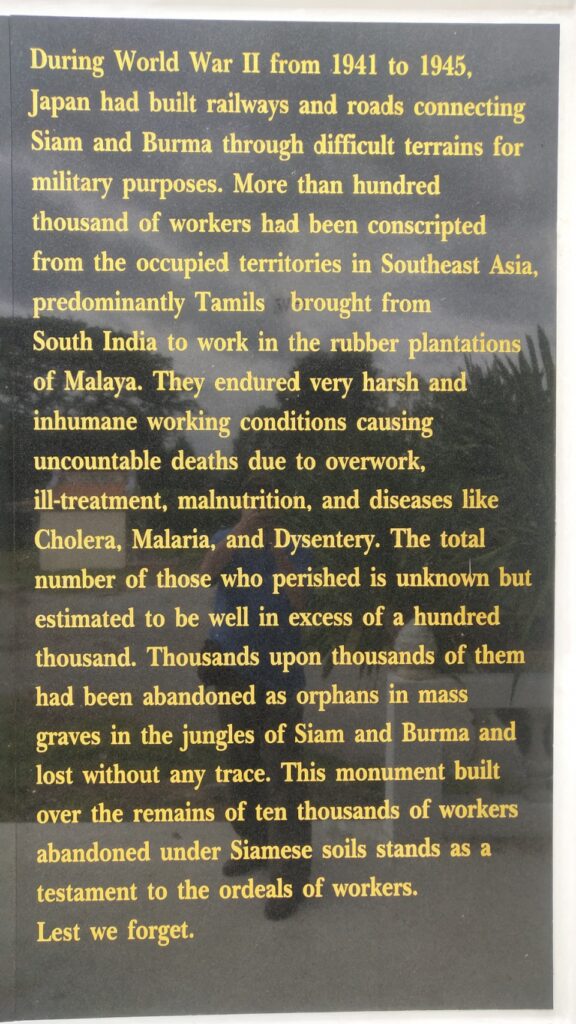
They choose to term this the “unnamed pagoda” and then left it without a name associated with the romusha.
For some inexplicable reason, this group also chose to deface the structure by reproducing the Chinese characters from the front of the original structure. What purpose this serves is known only to the minds that ordered it. Again, it adds nothing to the story of who is here and why.
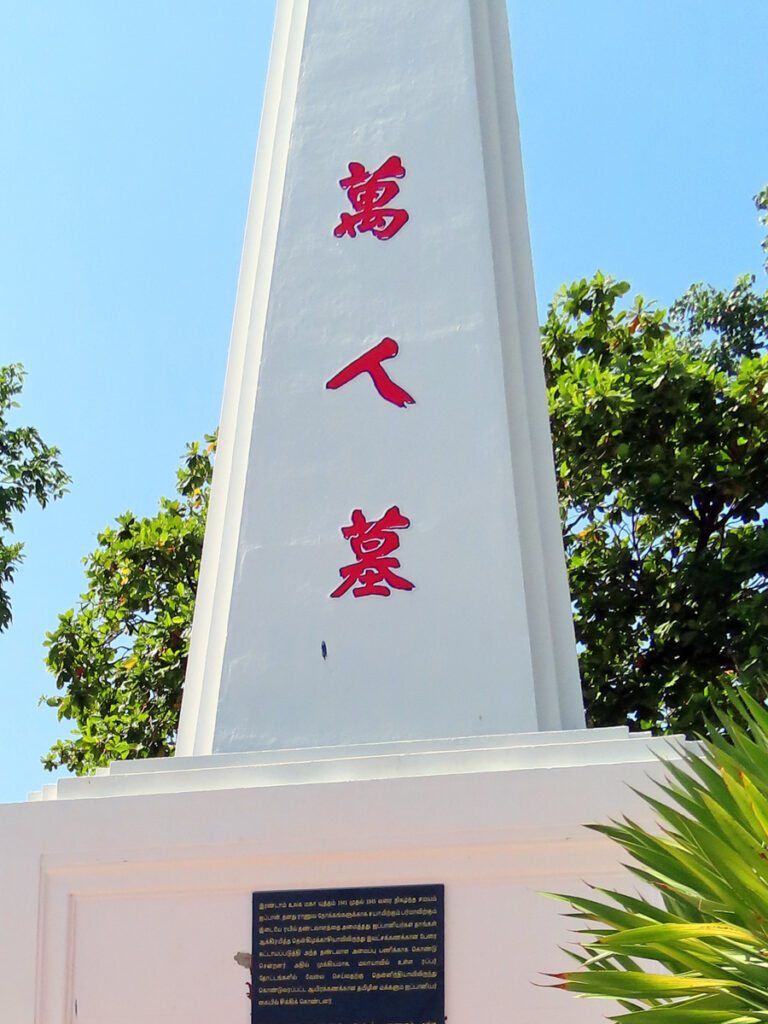
It could have been so much more. With a bit more attention to detail, less of a rush to ‘do something’, this memorial could have stood for ages as a testament to the tens of thousands who died in this era of history. Instead it is still a confusing and misunderstood “unnamed pagoda”.
Sad.
The problem:
It is truly a tragedy when a noble gesture goes wrong. Beginning in 2019, a group of descendants of romusha Tamils obtained permission from the temple abbot to re-dedicate the then neglected tomb to those who are buried there. Unfortunately, after decades of talk but no true action, one man hijacked the efforts of that group, froze them out and rushed this project. Repairs and renovations were done shoddily. An elaborate ceremony was thrown together. Inscriptions were literally carved in granite. But no time was taken to accurately state the history of those who were to be remembered here.
All because one self-serving narcissistic dinosaur insisted on his 15 minutes of fame, what resulted will be ignored if not become a laughing stock as future generations are confused by these inscriptions. The organizers spent an enormous amount effort (& money?) on a ceremony that lasted a few hours and then all disappeared.
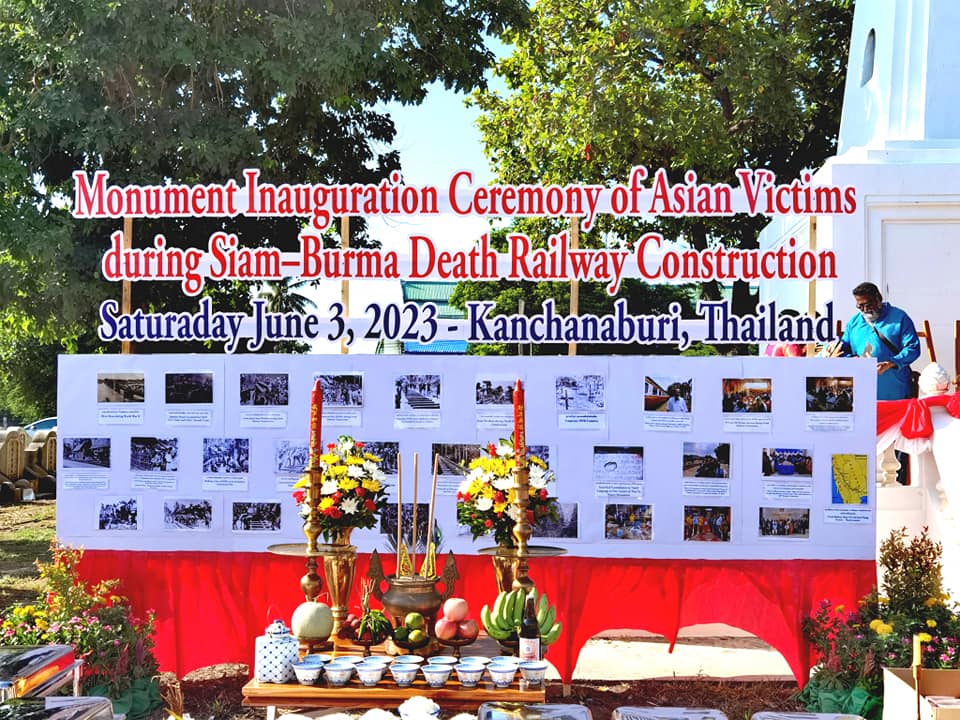
What is left is a confusing (at best) plaque and a hastily painted structure. I believe that many of them were duped into thinking it was going to be a worthy undertaking instead of an act of self-aggrandizement.
I have no direct stake in this sad episode of history; only a deep interest. I did, however, attempt to head-off what I saw as this impending disaster; I was rebuffed. Ever since I followed Prof David Boggett’s lead to this 1957 memorial, I have witnessed the concern and dedication of family members of those who were here. Then to see it hijacked and treated so frivolously by a self-serving dinosaur was heart breaking. What should have been a monument to thousands of forgotten lives will stand now as a testimony to the failure of a lonely, desperate man.
Truly caring people poured their heart and soul, time and effort into locating and preparing the way for this memorial, only to be cast aside and left in the dust.
“Life’s but a walking shadow; a poor player, that struts and frets his hour upon the stage, and then is heard no more: it is a tale told by an idiot, full of sound and fury, signifying nothing.”
On the positive side, let us recognize that 97-year-old Arumugam Kandasmi is one of a handful of survivors of these events of 80 years ago. He deserved better than what was delivered on 3 Jun 2023.
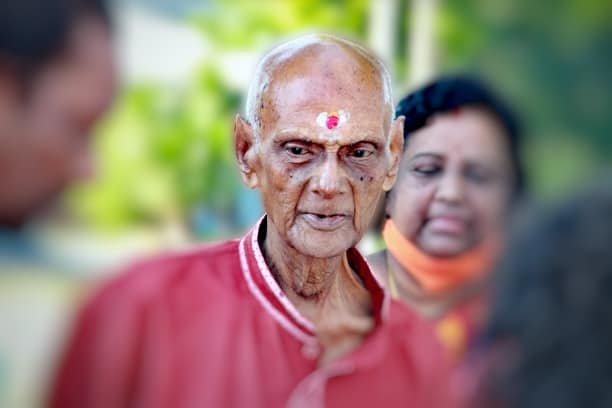
UPDATE NOV 2021:
There was a very promising meeting held by members of the Death Railway Interest Group (see below) to include the AMB from Malaysia. Over lunch we discussed the saga of the romusha at the TBR and a possible memorial to them. Further meetings are planned. My many thanks to Dr. Silva Kumar for leading this effort and for inviting me to attend and assist.
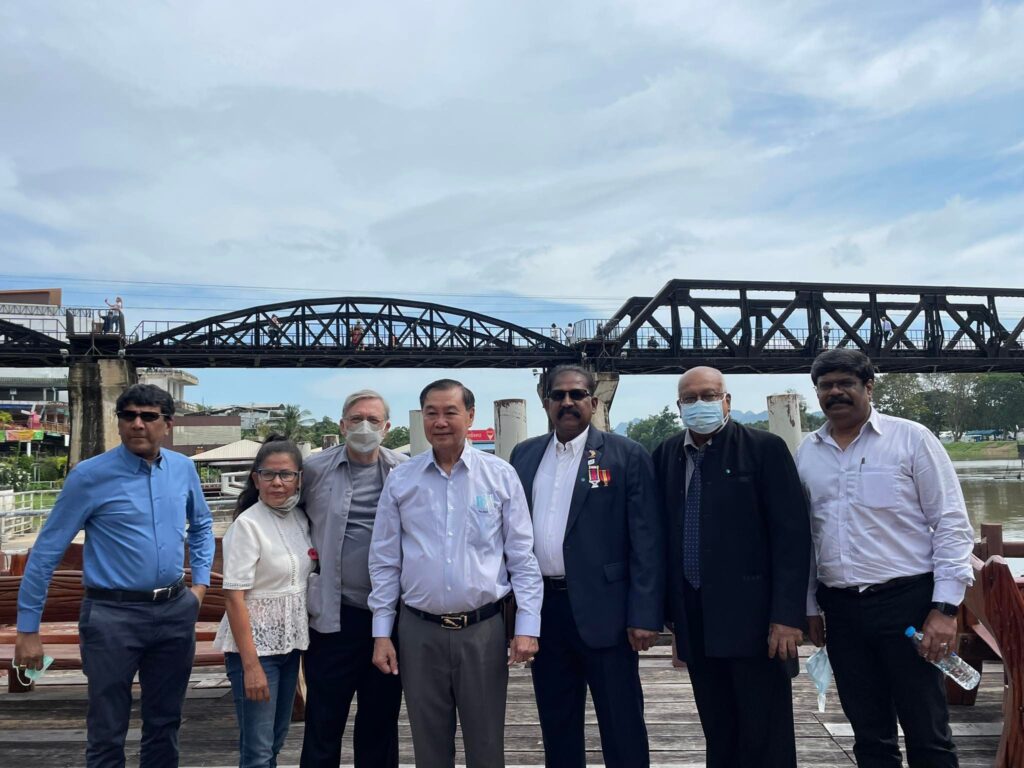
Another forgotten group:
https://www.thestar.com.my/news/nation/2020/08/09/sikh-workers-of-the-death-railway

As always an excellent write up Dr JJ, we have to now make sure to get the ” Nadukal” Tamil Prayer Stone done and we will do this separately away from the main mopnument by the corner and re share the right story and do a proper write up. We will start end June 2023.
Thank you for sharing this article
I hope you enjoy reading it as much as I enjoy researching and writing it.